Overheidsinstantie U.S. Environmental Protection Agency (EPA) besloot zelfs de glyfosaatregelgeving te herbezienRegelgeving aangepast
Vorig jaar claimde de actiegroep Moms Across America (MAA) dat zij in 3 van de 10 door hen onderzochte moedermelkmonsters sporen van glyfosaat hadden aangetroffen.
Het nieuws leidde tot ophef en bleek koren op de molen van glyfosaat-tegenstanders. De publieke onrust die dat veroorzaakte deed overheidsinstantie U.S. Environmental Protection Agency (EPA) zelfs besluiten de glyfosaatregelgeving te herbezien.
Acceptatie door autoriteiten
"Het Moms Across America onderzoek slaat de plank volledig mis", zegt onderzoeksleider MIchelle McGuire in Science Daily. Zij is onder meer bestuurslid van de International Society for Research in Human Milk and Lactation en viel van haar stoel toen MAA met het glyfosaatonderzoek naar buiten kwam.
McGuire: "Onze studie laat onweerlegbaar zien dat glyfosaat niet in moedermelk voorkomt. De bevindingen van MAA zijn niet geverifieerd, niet consistent met publieke veiligheidsdata en gebaseerd op testmateriaal dat ontworpen is om glyfosaat in water te testen, niet in moedermelk."
McGuire startte daarom eigen onderzoek. Ze verzamelde melk- en urinemonsters van 41 borstvoedende moeders uit twee stadjes in hoogproductieve agrarische gebieden waar het gebruik van glyfosaat de regel is. Van de proefpersonen woonden er 10 op of naast een boerderij, aten 23 gangbaar geteelde groenten en fruit en bleken 5 ook zelf glyfosaat gemengd of toegepast te hebben. McGuire gebruikte vloeistofchromatografie-massaspectrometrie methoden bij haar analyses.
Autoriteiten nemen conclusies McGuire over
De resultaten lieten zien dat er in geen enkel moedermelkmonster glyfosaat of glyfosaatmetabolieten voorkwamen. Dat bleek zelfs niet het geval als de moeder wel glyfosaatresiduen in haar urine had.
McGuire stelde geen verschil vast de melk van 'boerderijmoeders' en 'stadsmoeders'. Ze presenteerde haar onderzoek gisteren tijdens de Federation of American Societies for Experimental Biology Conference in de VS. Ondanks haar op slechts 41 zogende moeders gebaseerde onderzoek, namen de autoriteiten van de US Environmental Protection Agency McGuire's conclusies over.
Fotocredits: 'Her very first lunch', Stefan Malmesjö
Op 5 mei krijg je nieuwe kado-artikelen.
Als betalend lid lees je zoveel artikelen als je wilt, én je steunt Foodlog

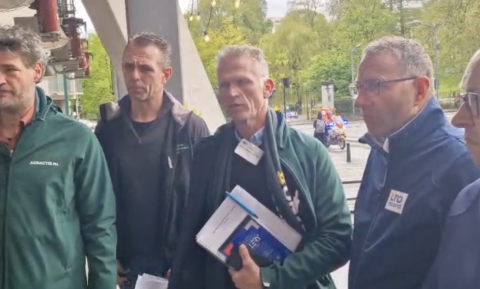
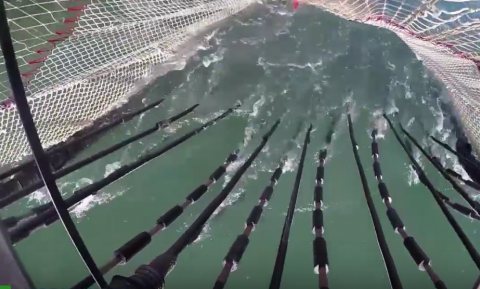

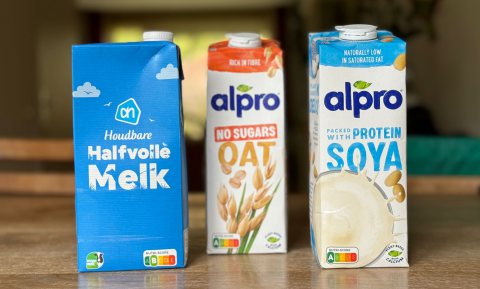



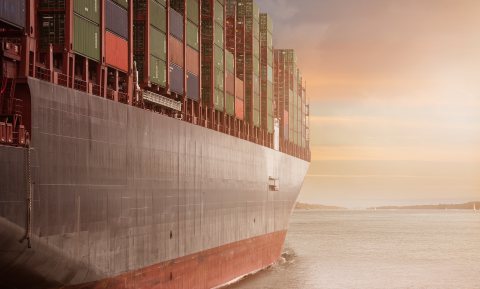

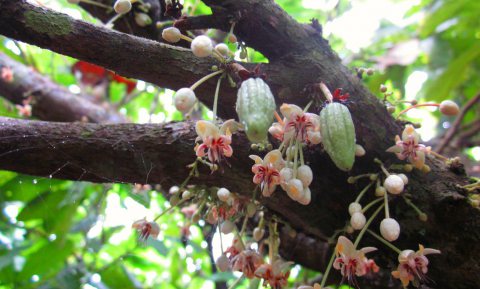
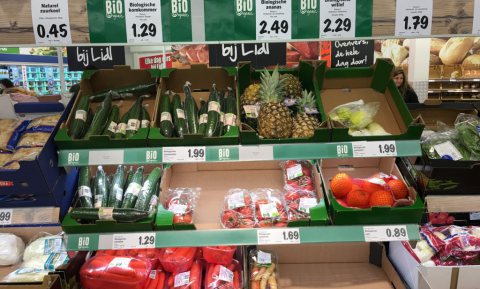
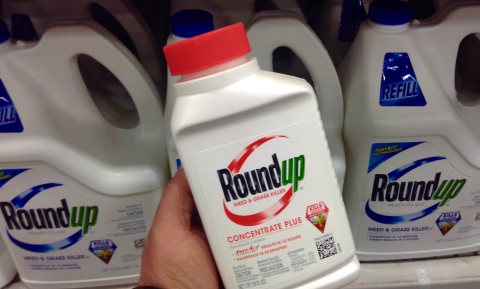
Dick Veerman #17, Ik ben er niet op uit om jouw stelling te ontkrachten, voel je niet aangevallen... en vergeet de dooddoener "Godwin"; het is in rechte-lijn afkomstig uit die tijd. Het is slechts bedoeld als achtergrondinformatie; om een 'helicopterview' te krijgen over wat er allemaal aan de gang is met Internationale handelsverdragen, voedselwetten, big pharma, gmo zaden, chemische vergiftiging dmv landbouw, veeteelt en voedsel, etc. Ik ben sceptisch mbt samenzweringstheorien maar wordt toch een beetje zenuwachtig als je alles overziet, en het 'voedsel-beheersings-net' zich langzaam ziet sluiten. Bill Gates bijvoorbeeld heeft niet voor niets een Bunker in Noorwegen laten bouwen waarin alle Natuurlijke zaden van deze Wereld zijn opgeslagen, hij kent, als raad van bestuur, de agenda van Monsanto. Meer over onderzoeken, vooral 'Seralini' ook even lezen, op deze site: [url=http://sustainablepulse.com/]
Guido #15, ik wil niet hoeven te geloven. Ik wil uitkomsten van onderzoek kunnen vertrouwen en ben gevoelig voor de toepassing van het voorzorgsprincipe.
In welk opzicht vind je je lijst (nog net geen Godwin) een ontkrachting van mijn stelling?
Nou, ik heb lange tijd gedacht dat het allemaal wel mee viel met Monsanto maar hier wordt toch maar even keihard bewezen dat het bedrijf eigenlijk de Antichrist zelve is!
Wie heeft er nog wetenschap nodig wanneer je een beetje kan Googelen?
Nou Dick Veerman Laten we je gezegde even letterlijk nemen: "de vooruitgang en progressieve krachten vind je in mensen door alle organisaties heen"
Ik help je even op weg door met het opfrissen van de geschiedenis te beginnen:
From Prince Bernhard (Agent Orange) > Hitler > Monsanto > Codex Alimentarius
I.G. Farben, A.E.G., DAPAG, etc. These multi-nationals had been built up by American loans in the 1920s, and in the early 1930s had American directors and heavy American financial participation.
Royal Dutch Shell, Standard Oil's great competitor in the 20s and 30s, and the giant brainchild of Anglo-Dutch businessman Sir Henri Deterding. It has been widely asserted that Henri Deterding personally financed Hitler. This argument is made, for instance, by biographer Glyn Roberts in The Most Powerful Man in the World. Roberts notes that Deterding was impressed with Hitler as early as 1921: ...and the Dutch press reported that, through the agent Georg Bell, he [Deterding] had placed at Hitler's disposal, while the party was "still in long clothes," no less than four million guilders. It was reported (by Roberts) that in 1931 Georg Bell, Deterding's agent, attended meetings of Ukrainian Patriots in Paris "as joint delegate of Hitler and Deterding
Another elusive case of reported financing of Hitler is that of Fritz Thyssen, the German steel magnate who associated himself with the Nazi movement in the early 20s. When interrogated in 1945 under Project Dustbin, Thyssen recalled that he was approached in 1923 by General Ludendorf at the time of French evacuation of the Ruhr. Shortly after this meeting Thyssen was introduced to Hitler and provided funds for the Nazis through General Ludendorf. In 1930-1931 Emil Kirdorf approached Thyssen and subsequently sent Rudolf Hess to negotiate further funding for the Nazi Party. This time Thyssen arranged a credit of 250,000 marks at the Bank Voor Handel en Scheepvaart N.V. at 18 Zuidblaak in Rotterdam, Holland, founded in 1918 with H.J. Kouwenhoven and D.C. Schutte as managing partners. This bank was a subsidiary of the August Thyssen Bank of Germany (formerly von der Heydt's Bank A.G.). It was Thyssen's personal banking operation, and it was affiliated with the W. A. Harriman financial interests in New York. ( Read ‘How Bush's grandfather helped Hitler's rise to power’ http://www.theguardian.com/world/2004/sep/25/usa.secondworldwar)
The largest contributor to the fund was I.G. Farben, which como mitted itself for 80 percent (or 500,000 marks) of the total. Director A. Steinke, of BUBIAG (Braunkohlen-u. Brikett-Industrie A.G.), an I.G. Farben subsidiary, personally contributed another 200,000 marks. In brief, 45 percent of the funds for the 1933 election came from I.G. Farben. If we look at the directors of American I.G. Farben — the U.S. subsidiary of I.G. Farben — we get close to the roots of Wall Street involvement with Hitler. The board of American I.G. Farben at this time contained some of the most prestigious names among American industrialists: Edsel B. Ford of the Ford Motor Company, C.E. Mitchell of the Federal Reserve Bank of New York, and Walter Teagle, director of the Federal Reserve Bank of New York, the Standard Oil Company of New Jersey, and President Franklin D. Roosevelt's Georgia Warm Springs Foundation. Paul M. Warburg, first director of the Federal Reserve Bank of New York and chairman of the Bank of Manhattan, was a Farben director and in Germany his brother Max Warburg was also a director of I.G, Farben. H. A. Metz of I.G. Farben was also a director of the Warburg's Bank of Manhattan. Finally, Carl Bosch of American I.G. Farben was also a director of Ford Motor Company A-G in Germany.
We know exactly who contributed, how much, and through what channels. It is notable that the largest contributors — I.G. Farben, German General Electric (and its affiliated company Osram), and Thyssen — were affiliated with Wall Street financiers. These Wall Street financiers were at the heart of the financial elite and they were prominent in contemporary American politics. Gerard Swope of General Electric was author of Roosevelt's New Deal, Teagle was one of NRA's top administrators, Paul Warburg and his associates at American I.G. Farben were Roosevelt advisors. It is perhaps not an extraordinary coincidence that Roosevelt's New Deal — called a "fascist measure" by Herbert Hoover — should have so closely resembled Hitler's program for Germany, and that both Hitler and Roosevelt took power in the same month of the same year — March 1933.
There is no record that I.T.T. made direct payments to Hitler before the Nazi grab for power in 1933. On the other hand, numerous payments were made to Heinrich Himmler in the late 1930s and in World War II itself through I.T.T. German subsidiaries. The first meeting between Hitler and I.T.T. officials — so far as we know — was reported in August 1933, when Sosthenes Behn and I.T.T. German representative Henry Manne met with Hitler in Berchesgaden. Subsequently, Behn made contact with the Keppler circle (see Chapter Nine) and, through Keppler's influence, Nazi Baron Kurt von Schröder became the guardian of I.T.T. interests in Germany. Schröder acted as the conduit for I.T.T. money funneled to Heinrich Himmler's S.S. organization in 1944, while World War II was in progress, and the United states was at war with Germany.
Through Kurt Schröder, Behn and his I.T.T. gained access to the profitable German armaments industry and bought substantial interest in German armaments firms, including Focke-Wolfe aircraft. These armaments operations made handsome profits, which could have been repatriated to the United States parent company. But they were reinvested in German rearmament. This reinvestment of profits in German armament firms suggests that Wall Street claims it was innocent of wrongdoing in German rearmament — and indeed did not even know of Hitler's intentions — are fraudulent. Specifically, I.T.T. purchase of a substantial interest in Focke-Wolfe meant, as Anthony Sampson has pointed out, that I.T.T. was producing German planes used to kill Americans and their allies — and it made excellent profits out of the enterprise.
Westrick, Texaco, and I.T.T.
I.T.T. had yet another conduit to Nazi Germany, through German attorney Dr. Gerhard Westrick. Westrick was one of a select group of Germans who had conducted espionage in the United States during World War I. The group included not only Kurt von Schröder and Westrick but also Franz von Papen and Dr. Heinrich Albert. Albert, supposedly German commercial attache in the U.S. in World War I, was actually in charge of financing von Papen's espionage program. After World War I Westrick and Albert formed the law firm of Albert & Westrick which specialized in, and profited heavily from, the Wall Street reparations loans. The Albert & Westrick firm handled the German end of the J Henry Schroder Banking loans, while the John Foster Dulles firm of Sullivan and Cromwell in New York handled the U.S. end of the Schroder loans.
Westrick at this time became a director of all I.T.T. operations in Germany, in order to protect I.T.T. interests during the expected U.S. involvement in the European war. Among his other enterprises Westrick attempted to persuade Henry Ford to cut off supplies to Britain, and the favored treatment given by the Nazis to Ford interests in France suggests that Westrick was partially successful in neutralizing U.S. aid to Britain.
Although Westrick's most important wartime business connection in the United States was with International Telephone and Telegraph, he also represented other U.S. firms, including Underwood Elliott Fisher, owner of the German company Mercedes Buromaschinen A.G.; Eastman Kodak, which had a Kodak subsidiary in Germany; and the International Milk Corporation, with a Hamburg subsidiary. Among Westrick's deals (and the one which received the most publicity) was a contract for Texaco to supply oil to the German Navy, which he arranged with Torkild Rieber, chairman of the board of Texaco Company.
The Empire of I.G. Farben
Farben was Hitler and Hitler was Farben. (Senator Homer T. Bone to Senate Committee on Military Affairs, June 4, 1943.)
On the eve of World War II the German chemical complex of I.G. Farben was the largest chemical manufacturing enterprise in the world, with extraordinary political and economic power and influence within the Hitlerian Nazi state. I. G. has been aptly described as "a state within a state."
The Farben cartel dated from 1925, when organizing genius Hermann Schmitz (with Wall Street financial assistance) created the super-giant chemical enterprise out of six already giant German chemical companies — Badische Anilin, Bayer, Agfa, Hoechst, Weiler-ter-Meer, and Griesheim-Elektron. These companies were merged to become Inter-nationale Gesellschaft Farbenindustrie A.G. — or I.G. Farben for short. Twenty years later the same Hermann Schmitz was put on trial at Nuremburg for war crimes committed by the I. G. cartel. Other I. G. Farben directors were placed on trial but the American affiliates of I. G. Farben and the American directors of I. G. itself were quietly forgotten; the truth was buried in the archives.
It is these U.S. connections in Wall Street that concern us. Without the capital supplied by Wall Street, there would have been no I. G. Farben in the first place and almost certainly no Adolf Hitler and World War II.
The Economic Power of I. G. Farben
Qualified observers have argued that Germany could not have gone to war in 1939 without I. G. Farben. Between 1927 and the beginning of World War II, I.G. Farben doubled in size, an expansion made possible in great part by American technical assistance and by American bond issues, such as the one for $30 million offered by National City Bank. By 1939 I. G. acquired a participation and managerial influence in some 380 other German firms and over 500 foreign firms. The Farben empire owned its own coal mines, its own electric power plants, iron and steel units, banks, research units, and numerous commercial enterprises. There were over 2,000 cartel agreements between I. G. and foreign firms — including Standard Oil of New Jersey, DuPont, Alcoa, Dow Chemical, and others in the United States, The full story of I,G, Farben and its world-wide activities before World War II can never be known, as key German records were destroyed in 1945 in anticipation of Allied victory. However, one post-war investigation by the U.S, War Department concluded that:
Without I. G.'s immense productive facilities, its intense research, and vast international affiliations, Germany's prosecution of the war would have been unthinkable and impossible; IG Farben not only directed its energies toward arming Germany, but concentrated on weakening her intended victims, and this double-barreled attempt to expand the German industrial potential for war and to restrict that of the rest of the world was not conceived and executed "in the normal course of business." The proof is overwhelming that I. G. Farben officials had full prior knowledge of Germany's plan for world conquest and of each specific aggressive act later undertaken
The process for manufacturing tetra-ethyl lead? essential for aviation gasoline, was obtained by I. G. Farben from the United States, and in 1939 I.G. was sold $20 million of high-grade aviation gasoline by Standard Oil of New Jersey. Even before Germany manufactured tetra-ethyl lead by the American process it was able to "borrow" 500 tons from the Ethyl Corporation. This loan of vital tetra-ethyl lead was not repaid and I.G. forfeited the $1 million security. Further, I.G. purchased large stocks of magnesium from Dow Chemical for incendiary bombs and stockpiled explosives, stabilizers, phosphorus, and cyanides from the outside world.
In 1939, out of 43 major products manufactured by I.G., 28 were of "primary concern" to the German armed forces. Farben's ultimate control of the German war economy, acquired during the 1920s and 1930s with Wall Street assistance, can best be assessed by examining the percentage of German war material output produced by Farben plants in 1945. Farben at that time produced 100 percent of German synthetic rubber, 95 percent of German poison gas (including all the Zyklon B gas used in the concentration camps), 90 percent of German plastics, 88 percent of German magnesium, 84 percent of German explosives, 70 percent of German gunpowder, 46 percent of German high octane (aviation) gasoline, and 33 percent of German synthetic gasoline.
Unfortunately, when we probe the technical origins of the more important of these military materials — quite apart from financial Support for Hitler — we find links to American industry and to American businessmen. There were numerous Farben arrangements with American firms, including cartel marketing arrangements, patent agreements, and technical exchanges as exemplified in the Standard Oil-Ethyl technology transfers mentioned above. These arrangements were used by I.G. to advance Nazi policy abroad, to collect strategic information, and to consolidate a world-wide chemical cartel.
One of the more horrifying aspects of I.G. Farben's cartel was the invention, production, and distribution of the Zyklon B gas, used in Nazi concentration camps. Zyklon B was pure Prussic acid, a lethal poison produced by I.G. Farben Leverkusen and sold from the Bayer sales office through Degesch, an independent license holder. Sales of Zyklon B amounted to almost three-quarters of Degesch (still an USA business); enough gas to kill 200 million humans was produced and sold by I.G. Farben. The Kilgore Committee report of 1942 makes it clear that the I.G. Farben directors had precise knowledge of the Nazi concentration camps and the use of I.G. chemicals. This prior knowledge becomes significant when we later consider the role of the American directors in I.G.'s American subsidiary. The 1945 interrogation of I.G. Farben director von Schnitzler reads:
Q. What did you do when they told you that I.G. chemicals was [sic] being used to kill, to murder people held in concentration camps?
A. I was horrified.
Q. Did you do anything about it?
A. I kept it for me [to myself] because it was too terrible .... I asked Muller-Cunradi is it known to you and Ambros and other directors in Auschwitz that the gases and chemicals are being used to murder people.
Q. What did he say?
A. Yes: it is known to all I.G. directors in Auschwitz.
There was no attempt by I.G. Farben to halt production of the gases — a rather ineffective way for von Schnitzler to express any concern for human life, "because it was too terrible." The Berlin N.W. 7 office of I.G. Farben was the key Nazi overseas espionage center. The unit operated under Farben director Max Ilgner, nephew of I.G. Farben president Hermann Schmitz. Max Ilgner and Hermann Schmitz were on the board of American I.G., with fellow directors Henry Ford of Ford Motor Company, Paul Warburg of Bank of Manhattan, and Charles E. Mitchell of the Federal Reserve Bank of New York. At the outbreak o£ war in 1939 VOWI employees were ordered into the Wehrmacht but in fact continued to perform the same work as when nominally under I.G. Farben. One of the more prominent of these Farben intelligence workers in N.W. 7 was Prince Bernhard of the Netherlands, who joined Farben in the early 1930s after completion of an 18-month period of service in the black-uniformed S.S.
After WWII
Kissinger, one of the key strategists of Nixon, nurtured by the Rockefellers, prepared what is known as National Security Study Memo (NSSM#200), in which he elaborated his plan for population reduction. In this Memo he specifically targets thirteen countries: Bangladesh, Brazil, Colombia, Egypt, Ethiopia, India, Indonesia, Nigeria, Pakistan, Turkey, Thailand, and the Philippines. The weapon to be used was food; even if there was a famine food would be used to leverage population reduction. Kissinger is on record for stating, “Control oil, you control nations; control food and you control the people.” He describes how the Rockefellers guided the U.S. agriculture policy, used their powerful tax-free foundations worldwide to train an army of bright young scientists in hitherto unknown field of microbiology. He traces how the field of Eugenics was renamed “genetics” to make it more acceptable and also to hide the real purpose. Through incremental strategic adjustments within a handful of chemical, food and seed corporations, ably supported by the key persons in key departments of the U.S. Government, behemoths were created that could re-write the regulatory framework in nearly every country. And these seeds of destruction of carefully constructed regulatory framework -- to protect the environment and human health -- were sown back in the 1920s.
MONSANTO was voted the most evil corporation in the world. The ultimate goal is to own the food supply. They have strong ties to Nazi Germany and a company called I. G. Farben. We need to always eat organic and make sure that the poor are not living in a food desert. Research, production and use of chemical warfare agents was and is illegal actions under the Geneva Protocol especially after World War One. Agricultural Research became a cover story to hide the actual nature of chemical warfare research. The corporation of Monsanto picked up where the Nazi Haber institute and I.G. Farben left off, in 1967 Monsanto entered into a joint venture with I.G. Farben and went on to produce Agent Orange for the Vietnam war. In an interesting coincidence Prince Bernhard belonged to the same club as John Francis Queeny the founder of Monsanto. Bernhard worked for I.G. Farben during its Nazi period and had the code name of ‘agent orange’. Benhard went on to found the Bilderberg Group after WW II. Most of our toxic pesticides trace their history to the production of Agent Orange the horrific chemical used as a ‘defoliant’ that was showered upon the people of Vietnam from giant airships in a horrific replay of Nazi Germany’s Gas Chambers where the prisoners of Auschwitz thought they were entering a public shower, but instead were killed with Zyclon B. After the Nuremberg trials American affiliates of I. G. Farben and the American directors of I. G. itself were quietly forgotten and the truth was buried in the archives. Along with the Walberg (Federal Reserve Bank), Rockefellers (Standard Oil, Chase Manhattan Bank), Mellons (Gulf Oil, Alcoa Aluminum), DuPonts (DuPont Chemicals), General Motors, Henry Ford and his son Edsel who sat on the board of I.G. Farben America with banks and shipping companies operated by the Bush family were all crucial players in creating the industrial power of Nazi Germany’s Third Reich. These companies poured hundreds of millions of dollars into I.G. Farben and provided it with technology for tactically essential materials – while at times withholding the same materials and patents from the US government. I.G. Farben manufactured and promoted the use of Zyklon B, for the killing of people in Death Camps like Auschwitz.
Codex alimentarius and Fritz ter Meer (1884-1967)
Fritz ter Meer was member of the IG FARBEN executive committee 1926-1945, member of the working committee and the technical committee, director of section II
1943 plenipotentiary for Italy of the Reich Minister for armaments and war production, military economist chief industrialist responsible for Auschwitz .
1948 found guilty of "plundering" and "enslavement" and condemned to seven years detention. Released 1952.
1955 board member of Bayer
1956-1964 chairman of the board of Bayer chairman of the board of Th. Goldschmidt AG, deputy chairman of the board of Commerzbank, Bank-Association AG, board member of the Waggonfabrik Uerdingen, the Duesseldorfer waggonfabrik AG, the bank association West Germany AG and the United Industrial enterprises AG (VIAG)
In 1962, ter Meer was one of the architects of the Codex Alimentarius Commission and one of the main designers of the schemes that would profit from human suffering.
Dit is 'bij elkaar geharkt' op internet... Geloven wij MONSANTO?
De commotie rond wel/geen glyfosaat in moedermelk vind ik begrijpelijk, zeker als je het wel en wee van enkele beruchte producten van dit bedrijf kent. Voor velen is dit nooit meer goed te praten.
Monsanto heeft DDT, PCB en Agent Orange in zeer grote hoeveelheden over onze aarde verspreid; aanvankelijk "ongevaarlijk".
De tijdspanne van gebruik tot toepassingsverbod i.v.m. milieuvervuiling, en gezondheidsrisico's is veel groter dan de testperiodes die nodig zijn om toelating te verkrijgen.
Van introductie tot productiestop (Wikipedia):
PCB's (1929-1985), Agent-Orange (1940-1983), glyfosaat (1987-?).